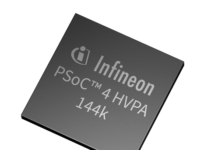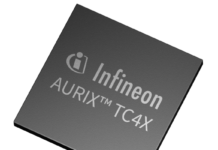
The MIPI Alliance, an international organization that develops interface specifications for mobile and mobile-influenced industries, and the Automotive SerDes Alliance (ASA), a non-profit industry alliance of automotive technology providers collaborating to standardize asymmetric SerDes technology, announced today that the two organizations have entered into a liaison agreement.
The terms of the agreement create a pathway so that implementers will be able to use MIPI Camera Serial Interface 2 (MIPI CSI-2)—widely considered the preferred camera and image sensor interface by the extended automotive ecosystem—directly, or “natively,” with the ASA Motion Link (ASA-ML) physical layer (PHY) interface. Supporting specifications would also be made available through this pathway, such as MIPI Camera Service Extensions (MIPI CSE), which provides protocol-layer security and additional functional safety support.
MIPI and ASA each have standardized asymmetric SerDes PHY interfaces (MIPI A-PHY and ASA-ML, respectively) for automotive applications such as advanced driver-assistance systems (ADAS), autonomous driving systems (ADS) and in-vehicle infotainment (IVI) that rely on cameras/sensors and displays. MIPI members can implement CSI-2 directly only with a MIPI PHY (i.e., A-/C-/D-PHY) or MIPI Board-approved non-MIPI PHY. Products incorporating other PHYs may utilize CSI-2 with a “bridge” device following a MIPI-approved PHY. Upon successful completion of the process defined under this liaison, ASA-ML will be approved for native integration with CSI-2.
Under the agreement, ASA will develop an Application Stream Encapsulation Protocol (ASEP) to enable native CSI-2 transport over the ASA Motion Link PHY. Once the CSI-2 ASEP is approved by MIPI, ASA will include the CSI-2 ASEP in its next specification release as the only recommended camera protocol interface. Implementation of CSI-2 over ASA Motion Link will require memberships in both MIPI and ASA to benefit from their respective intellectual property licensing terms.
The agreement also provides for ongoing dialogue between the organizations on other opportunities for collaboration, such as the use of MIPI Display Serial Interface 2 (MIPI DSI-2) and security-related specifications.
“This agreement supports the continued coalescence around MIPI CSI-2 in automotive applications,” said Sanjiv Desai, chair of the MIPI Alliance. “The specification is already strongly established in the market, and we believe alignment on CSI-2 will help foster a streamlined development environment for the global automotive industry. At the same time, MIPI will continue to support MIPI A-PHY and the rapidly growing ecosystem around it.”
“ASA is pleased to work with the MIPI Alliance to expand the ways the ASA-ML SerDes can be deployed in automotive industry,” said Christoph Arndt, chair of the ASA Alliance. “The ASA-ML specification has been tuned for multi-gigabit connectivity in harsh automotive environments and as a result has been gaining strong momentum. This liaison creates a pathway to new implementations and a broader ecosystem.”


















